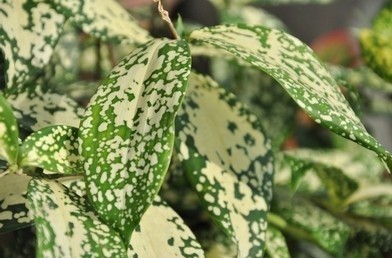Dracaena plants are mainly distributed in tropical and subtropical regions of Asia and Africa, with about 40 native species, many of which are not only popular indoor foliage plants for people all over the world.
 Dracaena plants with yellow stars dotting the foliage
Dracaena plants with yellow stars dotting the foliage
We use tissue culture technology to propagate this widely
used and highly economical plant in large quantities.
Some of them are also famous as Chinese herbal medicines, such as "hemorrhage", which has the function of stopping bleeding, activating blood circulation, and generating muscle, and is extracted from the red-brown resin secreted by the stems and branches of D. cambodiana after they are injured.
Dracaena plant also has high ornamental value and is a valuable tree for landscaping and home potting. Their stems are strong, and the leaves are draped in clusters in the upper part of the plant, often with bright yellow or cream stripes embedded in the bright green leaves, which is very beautiful. Many species of Dracaena plants have long been selected and cultivated over the years, and numerous horticultural varieties are widely used.
Tissue culture service
With the widespread popularity of Dracaena plants for landscape applications, the research and market demand for their ex vivo culture is growing. conventional propagation mainly relies on cuttings, which are slow and cannot meet the market needs. Lifeasible has conducted rapid ex vivo propagation of Dracaena plants using tissue culture technology, which can propagate a large number of seedlings in a short period. We have solved the seedling problem through mass propagation in tissue culture and have assisted our customers in achieving good economic results.
Based on our extensive experience, we generally recommend that our customers provide stem tips, axillary buds, and nodal stem segments of Dracaena plants as explants so that our staff can quickly and efficiently carry out the tissue culture project you have commissioned.
After induction of clump buds, succession culture, rooting, and transplanting, the transplanting of seedlings in vitro is crucial for the survival of the seedlings. Different treatments before transplanting, different transplanting substrates (air permeability, moisture, acidity, alkalinity, and nutrients), and different transplanting practices can have an impact on the transplanting results of tissue culture seedlings. However, you don't need to worry about this, we have established a fast and stable system based on our rich experience, and we can quickly customize the optimal ratio of base medium and transplanting treatment according to the status and source of explant materials provided by you and your project requirements.
You want to sign a confidentiality agreement.
You have a specific plant species for your experimental needs.
You have a reliable and relevant cooperation project to discuss.
You are very interested in our project or have any questions.
You need an updated and detailed quotation.
For research or industrial use.

 Dracaena plants with yellow stars dotting the foliage
Dracaena plants with yellow stars dotting the foliage
